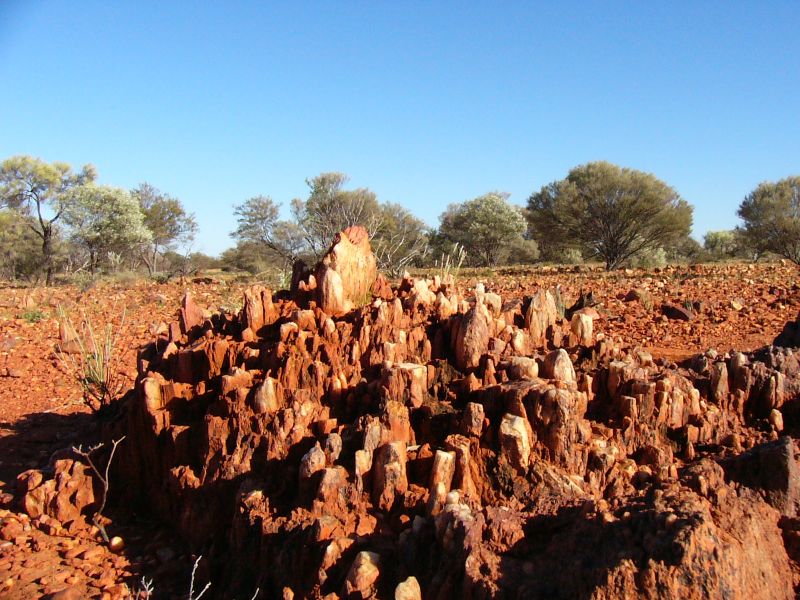Lineations in structural geology are linear structural point’s internal rocks. There are a wide variety of kinds of lineation’s, intersection lineation’s, crenulation lineation’s, mineral lineations and stretching lineation’s being the most common. Lineation discipline measurements are recorded as map strains with a plunge attitude and azimuth.
Intersection lineations are linear structures fashioned by
way of way of the intersection of any two surfaces in a three-D space. The
trace of bedding on an intersecting foliation aircraft usually seems as
coloration stripes generally parallel to nearby fold's hinges. Intersection lineation’s
can moreover be due to the intersection of two foliations.
Intersection lineations are measured in relation to the two
constructions which intersect to structure them. For instance, in accordance to
the dimension conventions of structural geology, unique bedding, S-0 intersected
by way of a fold's axial aircraft foliation, varieties an intersection
lineation L0-1, with an azimuth and plunge described with the resource of the
fold. This is the common cleavage-bedding intersection mindset and is
diagnostic of the plunge of the fold on all aspects of the fold.
Stretching Lineations
Stretching lineations is usual by means of way of shearing
of rocks at some point of uneven deformation of a rock mass. Stretching lineation’s
file specially the vector of high-quality stretch, which is perpendicular to
the precept aircraft of shortening.
A stretching lineation would possibly also be visualized as
a ball of treacle (molasses) which, when pulled, sorts a cigar-shaped rod
parallel to the path in which it is pulled. This is parallel to the path in
which a shearing force, as determined in a shear zone, stretches the rock.
Shortening takes place at the equal time as elongation alternatively in a
perpendicular sense to the stretched rod.
With reference to the picture at proper (top), the
conglomerate pebbles most possibly had been deposited as sub-spherical pebbles
and boulders. During deformation the rock used to be flattened and then
stretched by way of motion alongside a ductile shear region inside which this
outcrop resides. The spherical conglomerate pebbles stretched alongside the
route of action of this shear zone, accomplishing their contemporary
particularly flattened cigar-shaped form. The pebbles consequently report
necessary facts on the orientation of the shear quarter (sub vertical) and the
course of movement of the shear zone, and the everyday change in pebble
structure from at the starting sub-spherical to currently elongate
cigar-shaped, lets in one to quantify the strain expert by using the rock mass
in the geologic past.
Stretching lineation’s may additionally moreover
additionally show up as linear factors upon pre-existing surfaces such as
foliations inner shear zones (see image at right, below). In such a case the
lineation may additionally moreover no longer be as obvious in plan and might
additionally require dimension as a rake upon a planar surface. In this case,
the two lineations are fashioned in the same deformation match however are take
place in any other way owing to the one of a variety theologies of the deformed
rocks.
Finally, the key big difference between a stretching
lineation and an intersection lineation is that stretching lineation’s elevate
no information on the orientation of exclusive planar cloth inside a rock mass.
In the case of the illustrated lineation’s inside the sandstone, they do no
longer document an in the past deformation event's foliation and cannot be used
to infer orientation information for folds or actual bedding.
Linear constructions are fairly necessary in structural mapping;
they can be used to separate deformation phases and to decide the kinematics of
deformation. Quartz rods are one of the most attractive linear structures in
deformed rocks. Despite rather rare, rods are described in numerous locations
worldwide. Wherever rods occur, they are rapidly noticed. Rods shape a
conspicuous coarse lineation, frequently relatively contrasting with the
surrounding rock in areas that used to be as soon as below immoderate strain.
The time duration rod or rodding, in geology, generally refers to a mass of
rock, which has assumed a cylindrical structure at the same time as
accommodating strain; however, special definitions are observed in the
literature. The mechanisms of rod formation can be restrained from location
observations. They are regularly parallel to fold axes and lay at suited angles
to the direction of most compression. For extra information on RODS please
refer to: https://link.springer.com/chapter/10.1007/978-3-030-60143-0_8


